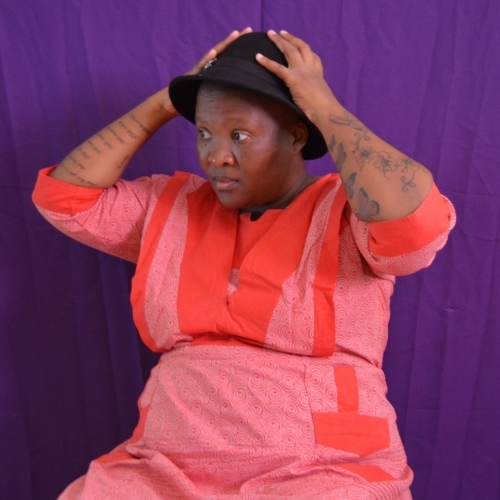Senzeni Marasela

Two words would describe Senzeni Mthwakazi Marasela: headstrong and uncompromising. Impatient with labels and pigeon-holing, Marasela uses photography, photocopy transfers, silkscreening and handicraft to explore collective and personal memory. Her choice of ‘raw’ (unprocessed) fabrics like calico, set against the highly worked quality of lace have, for her, strong ties to colonialism. The labour-intensive process of handstitching is her way of inscribing herself into this past she wishes to explore, as well as attempting to elevate her chosen imagery into a realm of the cherished and respected. Although deeply political, Marasela’s work bespeaks an ambivalent atitude towards past atrocities from which she was protected and guarded. Her sense of place as a black woman educated at a Catholic school in a white Afrikaans suburb gives her work an edge rarely encountered. In her own words: ” I believe that by revisiting the past, by giving myself a place in it, I’ll be able to forgive myself for my indifference.” (‘Democracy’s Images’ catalogue; interview conducted by Rory Bester)
An immediate concern is altering the profile of black women artists in this country. Marasela is acutely aware of the absence of black women in decision-making positions in the realm of arts and culture, and while acknowledging the importance of artists like Noria Mabasa and Mmakgabo Helen Sebidi, feels they have not ‘developed’ their language effectively or critically: black women artists need a contemporary language with which to speak about traditional content, and to move away from the association with ‘craft’. Marasela cites Tracey Rose and Moshekwa Langa as examples of ‘black’ artists whose work avoids easy categorisation.
Artist’s statement:
“Artists have an important role to play in telling stories about our turbulent history, especially when so many of the sincere gestures which make up this history have been cut down and mutilated. Hector Peterson is a good example. Up until 1976 young people hadn’t really been seen at the forefront of political struggle, especially in images that so vividly depicted the slaughter of innocence. A lot of people don’t really comprehend the significance of the events around 16th June 1976, especially the extent to which it marked the catalyst of events that were to bring down a regime. Stompie Seipei is another important example. He got caught up in a series of events that he didn’t fully understand. The way Stompie lived and died was and still is a burden to so many people. History is making him elusive to memory. These are just two examples of children who have become the victims of political ideologies. It is these emasculated ideologies that I try to grapple with as a woman and as a black artist.”
– Senzeni Marasela
Read More






